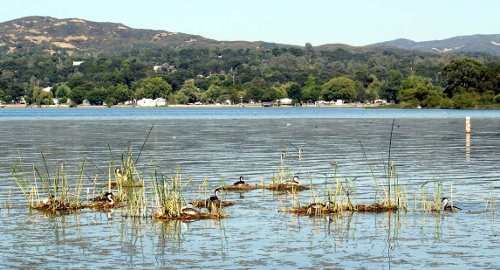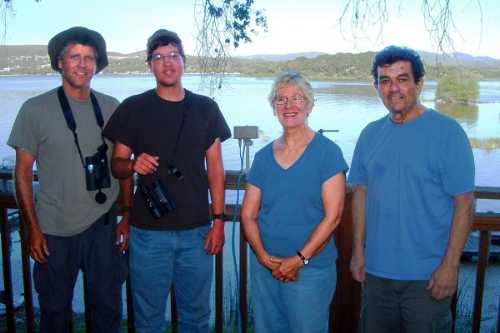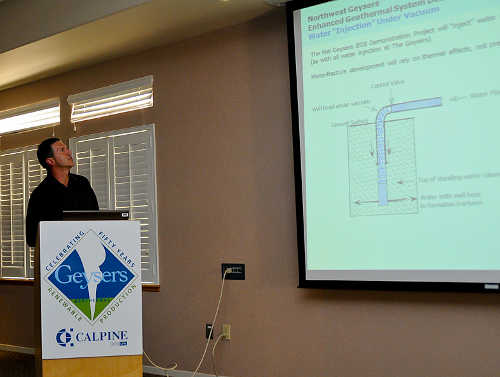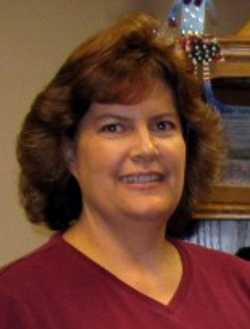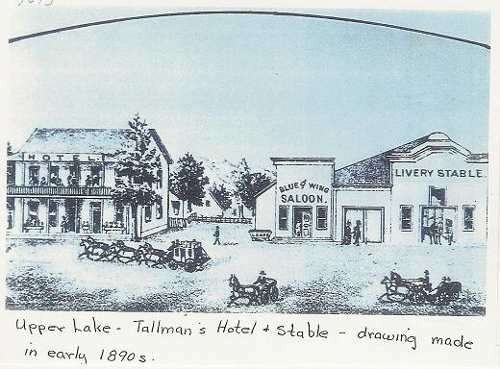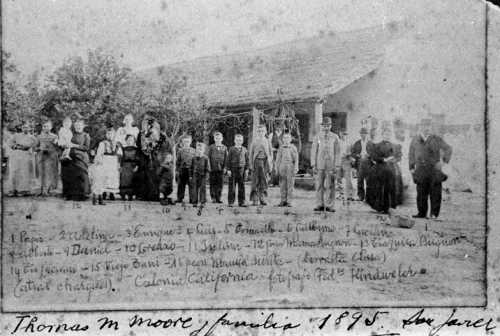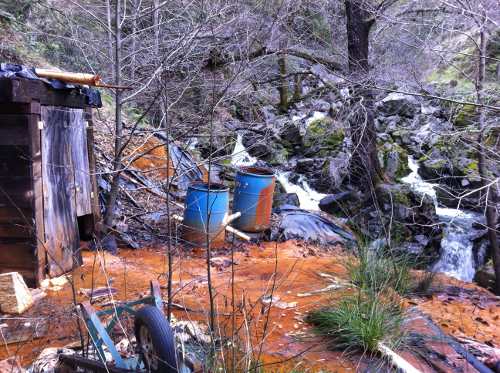
This beautiful bundle with an array of beans was purchased at the farmers' market in Redbud Park in Clearlake, Calif. on Friday evening, August 19, 2011. Photo by Esther Oertel.
A diverse and colorful array of summer green beans now grace local farmers’ market stalls.
Slender yard-long beans mingle with almost-as-long burgundy and speckled beans.
Traditional string beans share space with Italian flat beans and mottled cranberry beans.
Yes, green beans have arrived, dressed in style, ready for your table.
Green beans are, quite literally, the green, or unripe, fruit of any kind of bean. If left on the vine, the seeds within the pods would dry and harden, becoming like the dried beans found in the pasta aisle of your local supermarket.
Green beans are also known as snap beans, no doubt because of the sound they make when snapped into shorter lengths. String bean is another moniker, although the fibrous string that once ran the length of the bean has long been bred out in most varieties.
Blue Lake green beans, considered a gourmet bean and the standard-setter for the industry, originated in Lake County. Early in the last century this bean was grown in the Blue Lakes area of Lake County as a humble canning bean.
In 1923, the variety arrived in Oregon, where much of its development has taken place. Since that time, it’s become a favorite of consumers and home gardeners.

Yard-long beans, also known as Chinese long beans or asparagus beans, are shown here at the Saturday morning Lake County Farmers' Finest market at Steele Winery in Kelseyville, Calif. Photo by Esther Oertel.
Most markets will advertise the Blue Lake name when carrying it, and recipes have been developed to match its succulent crunch and mild, sweet flavor.
I can’t help but feel a flush of pride when I consider that its roots (literal and figurative) are in our picturesque backyard.
Green beans are a true American food. American Indians grew them in a trio with corn and squash, allowing the beans to travel up the corn stalks, with the low-growing, spreading squash below.
Today’s beans are thought to have evolved from a common Peruvian ancestor, spreading throughout the Americas by migrating Indian tribes. They were brought to Europe in the 16th century by Spanish explorers returning from the New World.
Portuguese and Spanish traders introduced the bean to many other parts of the world, evidenced by the diversity in the world’s largest producers of beans, with India, France, Indonesia, Iraq and the Netherlands among them.
Beans are grown as climbing vines called pole beans or as low shrubs known as bush beans. Many varieties, including Blue Lake beans, have both options available.
When pole beans are grown in backyard gardens, a shaded spot for children or grandchildren may be fashioned by training the vines up poles set in a tipi shape. As the greenery fills in and climbs, leaves and tendrils create a naturally cool play spot.

Yard long beans, burgundy-colored and speckled beans grace this farmers' stall at the Lake County Community Co-op Friday evening farmers' market in Clearlake, Calif. Photo by Esther Oertel.
An added bonus is that children will be tempted to snack on the fresh beans that hang into their space.
Yard-long beans, also known as Chinese long beans or asparagus beans, are a different genus than the common bean, though they look like a super extended version of the green bean. Despite its name, this variety of the cowpea is actually about half a yard long, typically measuring about one and a half feet.
They’re similar in taste to the green bean and are used in much the same way. Popular in Asian cuisine, they’re often cut into shorter lengths and added to stir-fries.
I brought home a lovely bundle of them from the farmers’ market Friday evening, mingled with beautiful burgundy-colored and speckled beans.
The yard-long beans are crisp with a fresh, mild taste, while the other two varieties have a denser texture with a flavor that includes subtle radish overtones.
Haricort verts, also known as French green beans, are a thin variety of green bean that’s crisp and tender, but can be pricey.
The extremely slender pods offer a fresh, mild taste and delicate texture. Traditional green beans cut in half lengthwise are an adequate substitute in recipes if haricort verts prove to be unavailable.
I like to serve any version of these lovely height-of-season beans fresh on my table along with other crunchy raw vegetables, like carrots, radishes and tender white turnips. They’re one of my favorite vegetables to eat raw, rating alongside such favorites as snap peas.
If cooking them, do it lightly to retain color, texture and taste. When I pan sauté green beans, I blanch them quickly in boiling water first until they’re tender-crisp and still bright green. They should then go into the sauté pan for the briefest of times, just long enough to warm through and gather the flavors in the pan.
Beans may be blanched ahead of time and then plunged into a bath of ice water to stop the cooking process. Afterwards, store them covered in the fridge until ready to sauté.
As to flavors in the pan, beans are beautiful with any combination of butter, olive oil, shallots, garlic, thyme, lemon zest and sliced or slivered almonds.

Pictured here are cranberry beans at the Friday evening farmers' market sponsored by the Lake County Community Co-op in Clearlake, Calif. Photo by Esther Oertel.
Beans are also fantastic when grilled, which gives them a smoky, caramelized flavor. Toss them in garlic and olive oil prior to grilling. Use a grilling basket if you’ve got one; otherwise, lay them down so they crisscross the grids.
Grill for seven to 10 minutes over medium-high to high heat, turning with tongs or tossing in basket as needed. Once off the heat, finish with a bit of lemon zest and some salt to taste.
Despite their rich green color, green beans provide our bodies with important colorful, health-supporting carotenoids like lutein and beta-carotene in amounts comparable to their red-toned carrot and tomato cousins.
Green beans are high in antioxidants, which contribute, among other things, to good cardiovascular health.
They’re an excellent source of free radical-scavenging vitamin C and manganese, and bone-building vitamin K, and a very good source of immune-supportive, vitamin A; heart-healthy dietary fiber, potassium, and folate; and energy-producing iron.
In addition, green beans are a good source of bone-building magnesium, calcium, phosphorus, and copper; energy-producing thiamine, riboflavin, and niacin; muscle-enhancing protein; and anti-inflammatory omega-3 fatty acids.
Green beans have also been shown to contain valuable amounts of the mineral silicon, and in a form that makes it easier for us to absorb this bone-supportive and connective tissue-supportive nutrient.
Today’s recipe is a more delicately flavored way to serve green beans than the traditional casserole with mushroom soup and fried onions. I tried it at one of my favorite annual events, the Glendi Ethnic Foods Festival in Santa Rosa, Calif., and the recipe is from a cookbook I purchased during one of my visits there.
The festival takes place every third weekend in September, rain or shine, and if you go, these beans may be found at the Serbian foods booth. Or you could try it on your table this Thanksgiving.
If calories or saturated fat is a concern, experiment with lightening up the recipe by using olive oil in place of butter and a reduced-fat sour cream.
Serbian green beans
2 pounds fresh green beans, ends trimmed and cut in 1-inch lengths
Large bowl of ice water
¼ cup bread crumbs
½ cup butter
2 cloves garlic, mashed
¼ cup chopped parsley
½ teaspoon salt
¼ teaspoon freshly ground black pepper
Cup sour cream
Preheat oven to 350 degrees F. Bring a large pot of water to boil. Add beans, return to boil and boil 3 minutes. Drain and plunge into a bowl of ice water to stop cooking.
Melt butter over medium heat in a medium skillet. Add bread crumbs and sauté until lightly browned. Stir in garlic and sauté 2 minutes, being careful not to brown. Turn off heat, add parsley, salt and pepper, and mix well.
In a large bowl, mix beans and breadcrumb mixture. Lightly grease a shallow ovenproof casserole and add beans. Spread sour cream evenly over top. Bake for 25 minutes, or until heated through.
Serves eight as a side dish.
Recipe courtesy of “Glendi Recipes,” published by St. Seraphim of Sarov Church, Santa Rosa, Calif., first edition, copyright 2008.
Esther Oertel, the “Veggie Girl,” is a culinary coach and educator and is passionate about local produce. Oertel teaches culinary classes at Chic Le Chef in Hidden Valley Lake, Calif., and The Kitchen Gallery in Lakeport, Calif., and gives private cooking lessons. She welcomes your questions and comments; e-mail her at This email address is being protected from spambots. You need JavaScript enabled to view it..
Follow Lake County News on Twitter at http://twitter.com/LakeCoNews, on Tumblr at www.lakeconews.tumblr.com, on Facebook at http://www.facebook.com/pages/Lake-County-News/143156775604?ref=mf and on YouTube at http://www.youtube.com/user/LakeCoNews.


